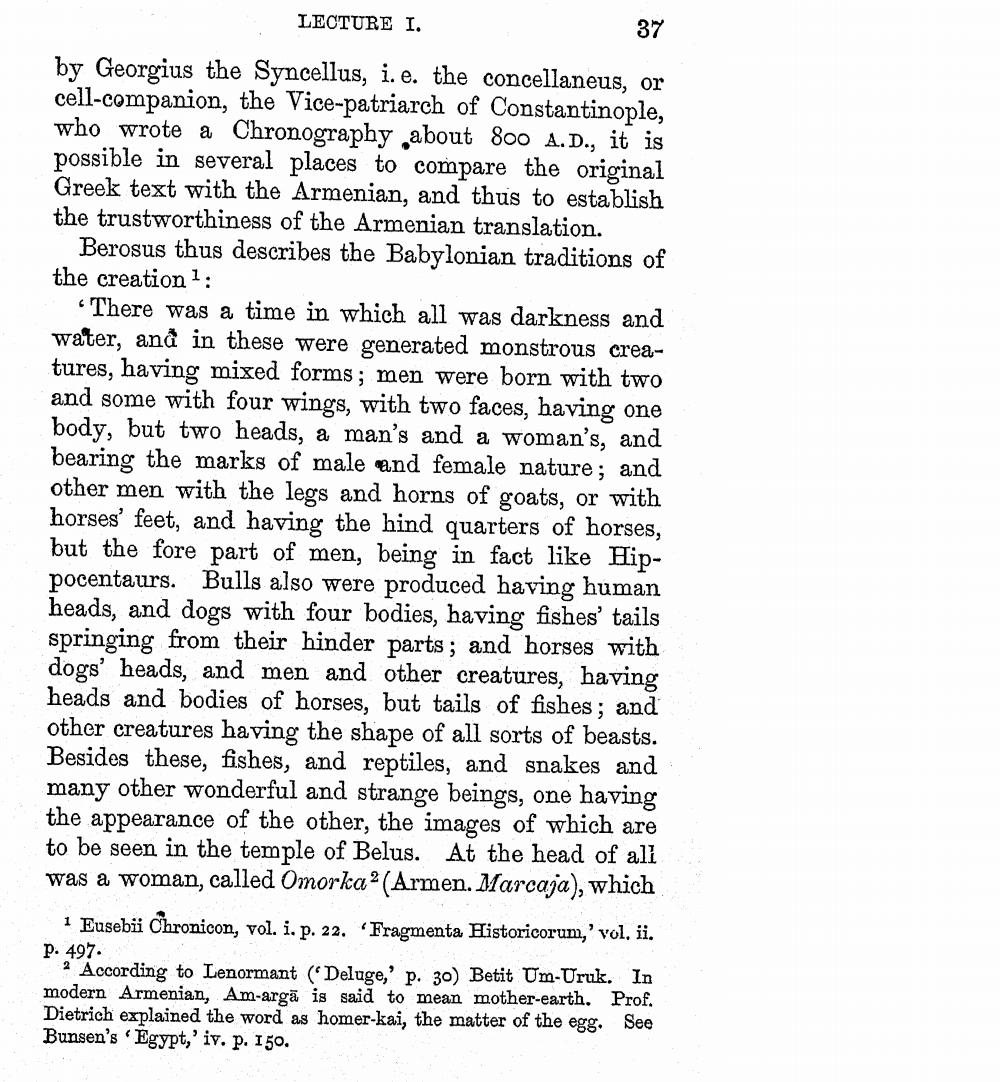________________
LECTURE I.
by Georgius the Syncellus, i.e. the concellaneus, or cell-companion, the Vice-patriarch of Constantinople, who wrote a Chronography about 800 A.D., it is possible in several places to compare the original Greek text with the Armenian, and thus to establish the trustworthiness of the Armenian translation.
Berosus thus describes the Babylonian traditions of the creation 1:
There was a time in which all was darkness and water, and in these were generated monstrous creatures, having mixed forms; men were born with two and some with four wings, with two faces, having one body, but two heads, a man's and a woman's, and bearing the marks of male and female nature; and other men with the legs and horns of goats, or with horses' feet, and having the hind quarters of horses, but the fore part of men, being in fact like Hippocentaurs. Bulls also were produced having human heads, and dogs with four bodies, having fishes' tails springing from their hinder parts; and horses with dogs' heads, and men and other creatures, having heads and bodies of horses, but tails of fishes; and other creatures having the shape of all sorts of beasts. Besides these, fishes, and reptiles, and snakes and many other wonderful and strange beings, one having the appearance of the other, the images of which are to be seen in the temple of Belus. At the head of all was a woman, called Omorka? (Armen. Marcaja), which
1 Eusebii Chronicon, vol. i. p. 22. Fragmenta Historicorum,' vol. ii. p. 497.
2 According to Lenormant (Deluge,' p. 30) Betit Um-Uruk. In modern Armenian, Am-argā is said to mean mother-earth, Prof. Dietrich explained the word as homer-kai, the matter of the egg. See Bunsen's 'Egypt,' iv. p. 150.




